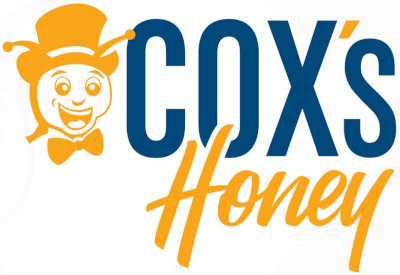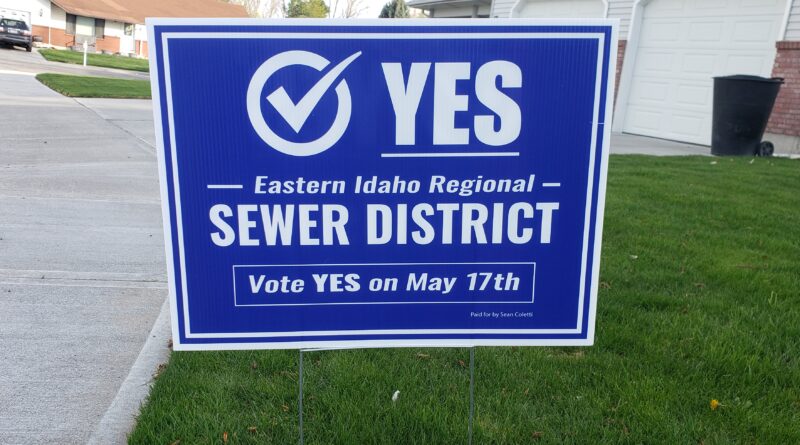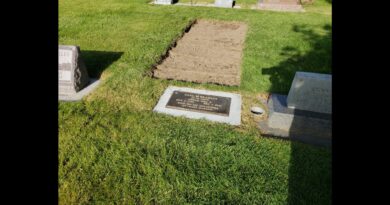Vote for Sewer District
On May 17, in addition to candidate primaries for state and federal offices, this May ballot will also have an important question for some Ammon, Shelley, and county residents: “Shall the Eastern Idaho Regional Sewer District be organized?â€
In 2007 the city residents of Ammon and Shelley voted to pass respective bonds for the two cities in order to create a regional sewer system in conjunction with Bonneville County and Bingham County. In conjunction with the vote, the four government entities entered into a “Joint Powers Agreement†to jointly operate and maintain a sewer treatment plant and several sewer lines to convey sewage to the plant. From its beginnings, the four entities agreed that this new organization would one day need to be a sewer district.
This organization that was formed is called the “Eastern Idaho Regional Wastewater Authority†or “EIRWWA.†The Oxbow wastewater treatment plant was built along the Snake River west of Shelley, where most of Ammon’s and Shelley’s sewer is currently treated.
The Joint Powers Agreement signed by the four entities stated that, regardless of size or population, each entity would have one vote on the new EIRWWA board, each being appointed by their respective city councils or county commissioner boards. That balance remains in place today, even though Ammon’s sewer flow to the plant has reached nearly 70% of the flow, with Shelley’s flow at 26%. The remaining fraction of flow is used by portions of Bonneville and Bingham Counties.
One of the purposes of forming the new sewer district is to address this imbalance of representation. The new district will add a board member, giving Ammon three representatives and Shelley two, with county areas flowing to the plant being combined with city representation. Each representative on the proposed new district board will live in one of five zones. While current representation on the sewer board is by appointment, sewer customers district-wide would be able to directly elect all five board members of the new sewer district.
A new district is also intended to address an imbalance in future funding of the plant, which is needing capacity upgrades in the near future. While cities like Ammon and Shelley have bonding authority, counties do not. Under the current joint powers agreement arrangement, if future bonding was ever needed, those bonds would have to be passed by city sewer users only. A sewer district, on the other hand, has bonding authority, meaning that sewer customers district-wide would be affected equitably by future sewer decisions. The sewer district would also have the capability to consolidate and refinance the existing Ammon and Shelley bonds for future needs.
There will also be better operations for the regional sewer system by forming a district. Having one organization running sewer operations throughout the district will provide for a more cohesive decision-making board where all parties are equally impacted. This will bring efficiencies and better operations than the current joint powers arrangement between four separate entities, where in the past conflicting interests have undermined sewer users. Also, functioning as a sewer district may also provide better access to state and federal grant and loan funding than a joint agreement. The EIRWWA entities are currently seeking grant funding from the Idaho Department of Environmental Quality, or DEQ. In late 2020, the DEQ ordered EIRWWA to proceed to form a sewer district.
Residents of Iona and northern Bonneville County, including some parts of Ammon, are already part of another sewer district called the “Iona-Bonneville Sewer District.†Just like IBSD, the new proposed sewer district will have five board members elected by the public and living in five respective zones.
The sewer district ballot question will not involve a bond request or tax or fee increase request. The question asked will simply be whether or not the sewer district should be formed.
Even so, the long-term financial impact on Ammon and Shelley residents could potentially be greater if a sewer district is not formed. Without a sewer district, any future expansion needs would fall on the backs of city residents, leaving county sewer customers out of the equation. A district more equitably addresses the needs of the sewer plant across all sewer district customers, whether they live in the city or county.
We strongly believe that this sewer district will be beneficial to all affected, and urge you to support it on May 17. More information about EIRWWA or the sewer district vote can be found at https://eirwwa-gatewaymapping.hub.arcgis.com, or by contacting the cities of Ammon or Shelley.
Sean Coletti is the Mayor of the City of Ammon. Jeff Kelley is a City Councilman for the City of Shelley.





